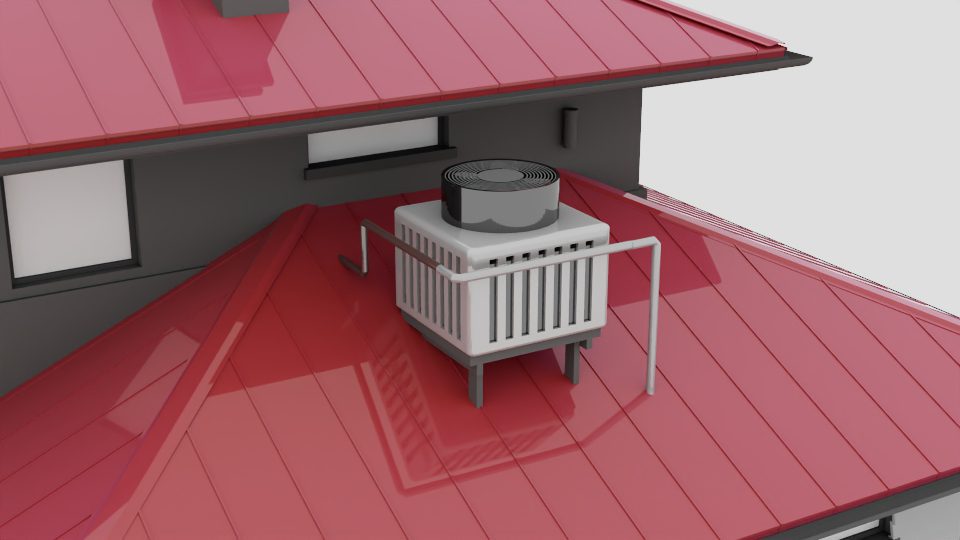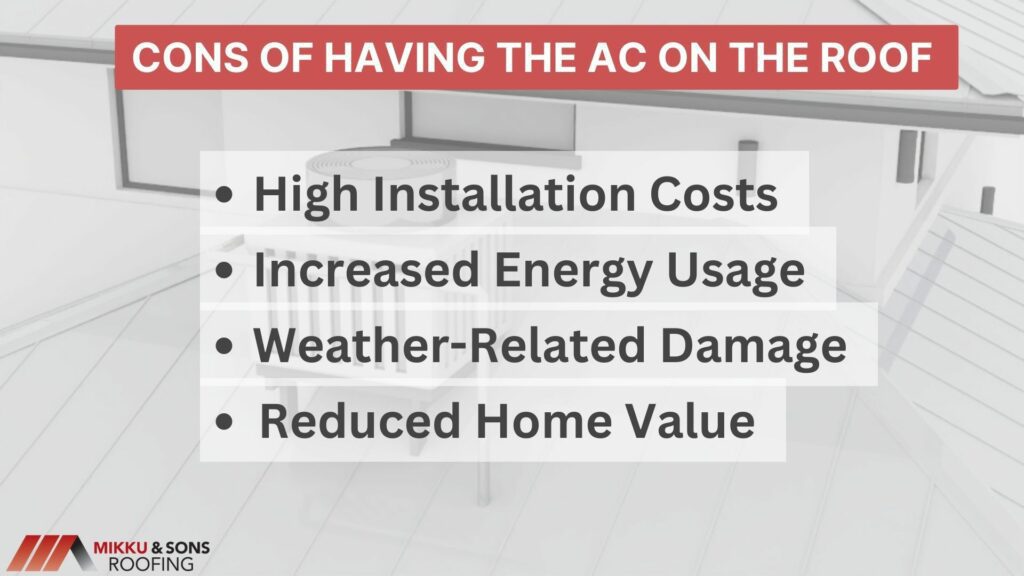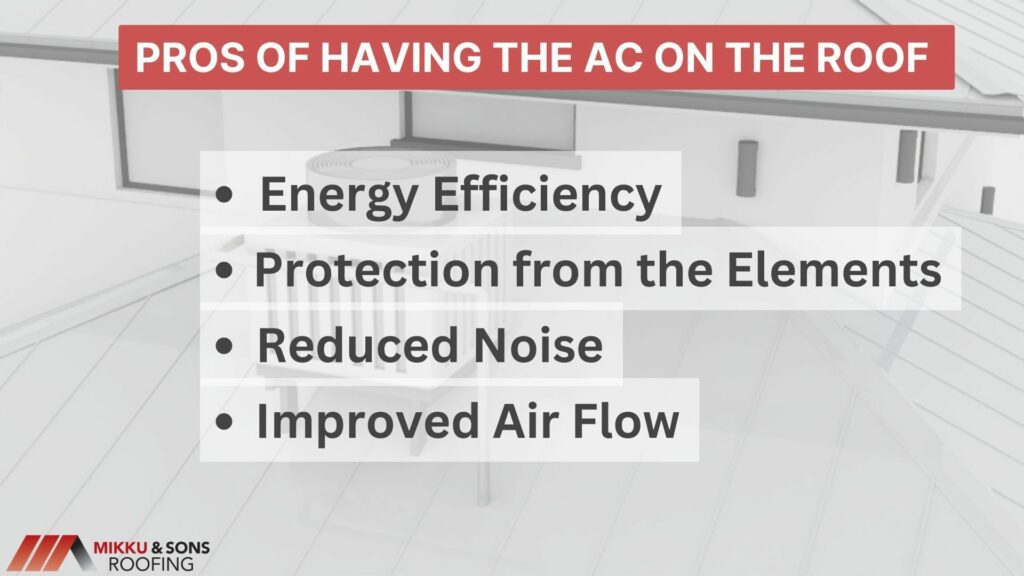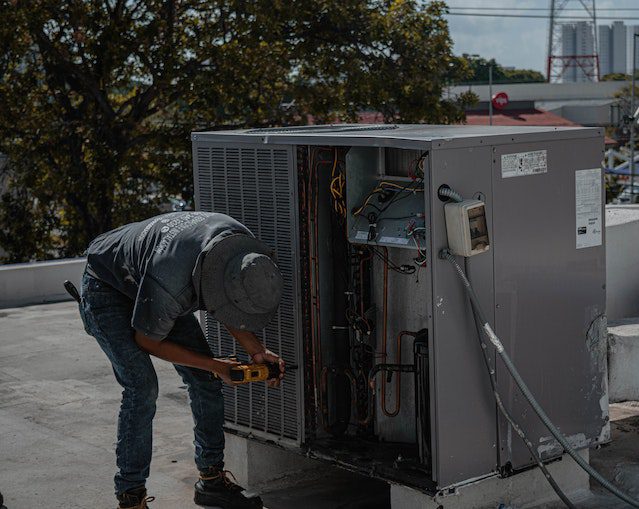

Welcome to the Arizona sun! It goes without saying that the summer heat in the desert can be awful, so keeping your house or place where you work cool requires a reliable air conditioning system.
However, did you know that mounting your air conditioner on the roof has benefits? In this article, we'll examine why, in Arizona, setting up an air conditioner on the roof is the best way to battle the heat.

As Arizonans, we know that the desert sun can be brutal in the summer months. Many households and businesses depend on air conditioning systems to be comfortable throughout the summer. But why do so many Arizona residents decide to install their air conditioners on the roof?
For residents of Arizona, installing an air conditioner on the roof is the greatest choice for a number of reasons. First of all, because it is the building's highest point and receives the most direct sunlight, the roof.
This makes it possible for the air conditioner to absorb heat more effectively and maintain the building's interior temperature. Second, the location on the roof makes it simple to maintain and repair the unit. Last but not least, installing a unit that needs a lot of space on the roof is a great idea.
There are benefits to installing an AC unit on the roof, but there are also some significant factors to take into account. To prevent potential issues, it's crucial to ensure that the roof is sturdy enough to hold the weight of the air conditioning unit and that the device is installed and maintained correctly. Additionally, it's crucial to confirm that the location of the unit will allow for proper ventilation.
You can be confident that you're making the greatest choice for your house or place of business by taking the time to explore the benefits and drawbacks of having an air conditioner on the roof in Arizona. Your rooftop air conditioner can give you many years of dependable service with appropriate installation and maintenance.

Air conditioning installation on the roof is common in Arizona due to the state's hot and dry climate. Putting an air conditioner on the roof in Arizona has its advantages, there are a few drawbacks that should be considered first.
The high price of installation is one of the major drawbacks of installing a rooftop air conditioner in Arizona. It can be time-consuming and costly to have a new air conditioning system constructed specifically to fit the roof. In addition, the price of labor and supplies to set up the unit might add up quickly. It is also important to factor in the price of any essential maintenance or repairs.
Having an air conditioner on the roof in Arizona also has the potential downside of increasing energy consumption. When the AC system struggles to keep up with the sun's heat, more power is needed to keep the building cool. Because of this, energy costs may rise, and pollution levels may rise as a result of an increase in the use of fossil fuels.
In Arizona, the danger of weather damage is increased when an air conditioner is installed on the roof. Severe weather, such as tornadoes, hurricanes, and hailstorms, are common in Arizona. Air conditioning units and roofs are particularly vulnerable to these elements, which may lead to expensive repairs. The sun's heat may also cause the air conditioner to overheat, which can be disastrous.
Last but not least, an Arizona home's value might drop if an air conditioner is installed on the roof. Many potential buyers may be put off by the sight of an AC unit on the roof, as it can be unsightly and detract from the overall appeal of the home.
A roof-mounted air conditioner may raise monthly energy bills, which might deter prospective buyers and result in a lower selling price.

Hot, dry weather and high temperatures are typical of the state of Arizona, making it challenging to maintain a comfortable indoor environment throughout the summer. Installing an air conditioner (AC) on the roof is a popular method of reducing a building's inside temperature.
Arizona residents and company owners are increasingly leaning toward this option due to its potential advantages. Having an air conditioner on the roof in Arizona has several benefits, including the following:
Energy efficiency is a major benefit of a rooftop air conditioner. Installing the air conditioner on the roof allows for more efficient distribution of cooled air throughout the building, leading to lower cooling costs.
Over time, this may have a major impact on how much money you save on your energy expenses. Additionally, the rooftop AC unit can be strategically placed so that it is exposed to the maximum amount of sunlight, which can help to further reduce energy costs.
Putting an air conditioner up on the roof also has the added benefit of keeping it out of harm's way. Due to its high position, the unit is less prone to dirt and dust accumulation and severe weather.
In the long run, this may save money on repairs and maintenance and increase the lifespan of the device. In addition, insects and animals that attempt to enter the unit from the ground are less likely to do damage to it.
Putting an air conditioner on the roof is a great way to cut down on outside noise. The higher the apartment is located, the less probable it is that it will be heard from the rest of the building or the street below. Those with a low tolerance for noise or those who just prefer a peaceful environment at home or work would appreciate this feature.
Putting an air conditioner on the roof is one method for improving ventilation within a building. The placement of the unit may be planned such that the conditioned air is circulated thoroughly throughout the building.

Rooftop air conditioning units need regular maintenance to ensure continued operation. Keeping up with routine maintenance can keep your unit running well, saving you both money and energy.
Keeping an air conditioner in good working order begins with routine inspections. It is important to visually examine the exterior of the device for any evidence of corrosion, damage, or missing or loose components.
Moreover, make sure that all of the filters are clean and in excellent shape, as this will increase the efficiency of the unit. If problems are detected, it is recommended to have the device serviced by a qualified technician.
Cleaning the coils is the next step in maintaining a rooftop air conditioner. It's recommended to conduct this at least once a year, since dirt and debris may accumulate on the coils and cause the system to function less efficiently.
You may use a brush and some mild detergent to clean the coils. Before you begin cleaning the coils, make sure to cut off the electricity to the device.
Duct inspection is another important part of operating a rooftop air conditioner. Ducts need to be inspected for blockages and other damage. You should also look for mold or mildew in the ductwork, since this may have a negative impact on the performance of the HVAC system.
Having the filters changed often is also important. A dirty filter might decrease the effectiveness of the unit, hence it's recommended to change filters at least once a year. Furthermore, keeping the filters clean and changed out on a regular basis keeps the machine free from dust and other particles.
As a last step, be sure to always check the refrigerant levels. Low refrigerant levels might affect the efficiency of the device. However, the device itself might be damaged if the levels are not properly maintained.

Rooftop air conditioning (AC) units are a specific kind of air conditioning system that are mounted on the roof of a building. Commercial and industrial settings, such as offices, industries, schools, and hospitals, are popular locations for rooftop units. Size, efficiency, features, and installation all play a role in how much a rooftop AC unit will set you back.
Rooftop air conditioner prices are heavily influenced by the system's capacity. British thermal units are the standard for determining the size of the unit (BTUs). Larger units with greater BTU ratings cost more than smaller ones with lower ratings for the same purpose. In addition, the area of the room and the volume of air that has to be cooled should be determined before deciding on a unit so that the right size may be chosen.
A rooftop air conditioner's price might vary depending on how efficient it is. There will be a price premium for higher SEER-rated units compared to their lower-rated counterparts. Yet, high-efficiency units may be worth the initial investment if they help you save money on your monthly energy bills.
A rooftop air conditioner's price may also be affected by the unit's specific characteristics. Humidity regulators, thermostats, digital readouts, and other extras may come standard on certain models. The unit's performance and efficiency may benefit from these additions, but they come at an extra expense.

Next, you need to think about how much money it will cost to have an air conditioning unit put up on the roof. The price of installation might change based on factors including the size and complexity of the project, as well as the material used for the roof. Hiring a professional contractor is important for guaranteeing a thorough and secure installation of the unit.
Generally, small residential rooftop air conditioners can range in price from around $500 to $3,500 or more. Commercial rooftop air conditioners can range in price from around $1,500 to $20,000 or more.The final price tag for a rooftop air conditioner depends on many factors.
Common kinds of air conditioning systems in both business and residential structures include rooftop units and those installed in the ground. There are benefits and drawbacks to both options. Rooftop air conditioners are more expensive than ground-mounted units.
The total cost of purchasing, installing, and maintaining an air conditioner might vary widely. Air conditioners installed on a roof often cost more than those put in the ground. Putting the air conditioner on the roof adds more work time and material costs, so it's not a cheap option.
Rooftop installations often take longer than ground installations and need more work and supplies due to the difficulties of getting to the rooftop. The cost may also rise if the rooftop air conditioner has to be fortified against the weather.
Installing an air conditioner in the ground is often more cost-effective than on the roof. This is due to the reduced complexity and lower overall cost of installation. Moreover, ACs installed on the ground are more convenient to service and repair.
There seems to be an infinite number of ways to cool a house. The use of an air conditioner is a common choice. There are many different types of air conditioners on the market, but the two most common installations are on the roof or in a side yard. Both types of air conditioners have their benefits and drawbacks, and homeowners can make an informed choice by learning about both.
Designed specifically for installation on the roof of a building, rooftop air conditioners are typically larger than their side-yard counterparts. They are more expensive than window or wall units, but more cost-effective in the long run. Air conditioners installed on the roof are more effective at cooling large areas and generate less noise pollution than those installed on the ground. As they tend to be situated higher up and further away from the elements, they are also less vulnerable to weather conditions.
Air conditioners for the backyard are generally affordable and compact to those intended for rooftop installation. Apart from being easier to install and maintain, they also have a lower noise than rooftop AC units since they are closer to the ground, making them more susceptible to weather, and more exposed to noise pollution from nearby streets and buildings.
Despite being more compact, less expensive, and quieter, side-yard air conditioners may still contribute to unwanted noise pollution. The choice whether to install a rooftop or a side-yard AC unit should be made based on the square footage to be cooled, the homeowner's budget, and the threshold for noise pollution.
